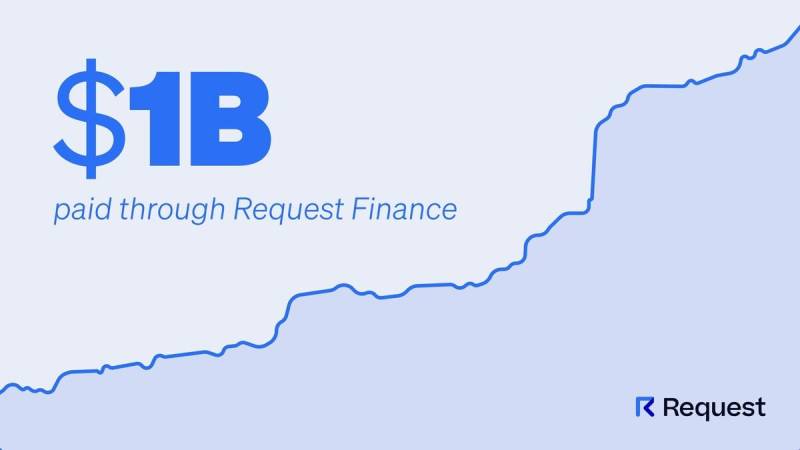 |
|
 |
|
 |
|
 |
|
 |
|
 |
|
 |
|
 |
|
 |
|
 |
|
 |
|
 |
|
 |
|
 |
|
 |
|

History of AI: Part Six — The Revolution


Fetch.ai
AI의 역사: 6부 — The RevolutionFetch.ai
Follow
·따르다
Fetch.ai
Fetch.ai에 게시됨
--
·3분 읽음 ·방금--
In this series chronicling AI history, we’re finally entering the 21st century.
AI의 역사를 기록한 이 시리즈에서 우리는 마침내 21세기에 들어서게 되었습니다.
So far, we have seen that AI embarked on a remarkable transformation over 50 years and slowly reshaped technology. Let’s now have a look at how it started reshaping our daily lives. Over the first two decades of this century, AI evolved from a mere concept to a reality.
지금까지 우리는 AI가 50년에 걸쳐 놀라운 변화를 시작하고 기술을 천천히 재구성하는 것을 살펴보았습니다. 이제 그것이 우리의 일상생활을 어떻게 변화시키기 시작했는지 살펴보겠습니다. 금세기의 첫 20년 동안 AI는 단순한 개념에서 현실로 진화했습니다.
The Emergence of New Applications
It was the early 2000s. The world survived Y2K — and was more excited about computers than ever. This is where new AI applications emerged. AI now was not only limited to research labs — but was slowly getting integrated into daily lives. It started helping with household gadgets to outer space exploration. For instance, in 2002, Roomba, a groundbreaking autonomous vacuum cleaner, was put to test in the markets. Just two years later, NASA’s Mars rovers, Spirit and Opportunity, made history by autonomously navigating the Martian terrain.
새로운 애플리케이션의 등장 2000년대 초반이었습니다. 세상은 Y2K에서 살아남았고 그 어느 때보다 컴퓨터에 열광했습니다. 새로운 AI 애플리케이션이 등장한 곳입니다. 이제 AI는 연구실에만 국한되지 않고 서서히 일상생활에 통합되고 있습니다. 가정용품을 사용하여 우주 탐사에 도움을 주기 시작했습니다. 예를 들어, 2002년에는 획기적인 자율형 진공청소기인 룸바(Roomba)가 시장에서 테스트되었습니다. 불과 2년 후, NASA의 화성 탐사선인 Spirit과 Opportunity가 화성 지형을 자율적으로 탐색하여 역사를 만들었습니다.
From simplifying daily chores to tackling the complexities of space exploration — AI was here. By the mid-2000s, AI was taking significant strides forward. One pivotal moment was in 2006 when the concept of “machine reading” was introduced. This breakthrough opened doors for AI systems to process and understand text independently, revolutionizing language comprehension.
일상적인 집안일을 단순화하는 것부터 우주 탐험의 복잡성을 해결하는 것까지 AI가 여기에 있었습니다. 2000년대 중반까지 AI는 상당한 발전을 이루었습니다. 2006년에 "기계 판독"이라는 개념이 도입된 중요한 순간이 있었습니다. 이 획기적인 발전은 AI 시스템이 텍스트를 독립적으로 처리하고 이해할 수 있는 기회를 열어 언어 이해력에 혁명을 일으켰습니다.
This is where three key pieces of technology emerged: Big Data, Deep Learning and Large Language Models.
여기서 빅 데이터, 딥 러닝, 대규모 언어 모델이라는 세 가지 핵심 기술이 등장했습니다.
Big Data and Economic Impact
By 2009, around the time the world was rushing to recover from the great economic collapse — nearly every sector of the U.S. economy was managing colossal volumes of data. By all reports — the data averaged around 200 terabytes per sector. The decade saw a big change in how we deal with data. It became more available, computers got faster and cheaper. This allowed us to use advanced machine learning techniques. This period was all about the rise of big data, which transformed how industries handled information.
빅 데이터와 경제적 영향 2009년까지 전 세계가 엄청난 경제 붕괴로부터 회복을 서두르고 있던 시기에 미국 경제의 거의 모든 부문이 엄청난 양의 데이터를 관리하고 있었습니다. 모든 보고서에 따르면 데이터는 섹터당 평균 약 200테라바이트입니다. 지난 10년 동안 우리가 데이터를 다루는 방식에 큰 변화가 있었습니다. 더 많은 가용성을 얻었고 컴퓨터는 더 빠르고 저렴해졌습니다. 이를 통해 우리는 고급 기계 학습 기술을 사용할 수 있었습니다. 이 시기는 빅 데이터의 등장으로 산업이 정보를 처리하는 방식을 변화시켰습니다.
Instead of limiting ourselves to select samples, we began utilizing all available data for analysis. This comprehensive approach enhanced decision-making and optimization processes. Big data was distinguished by its large scale, rapid pace, diverse nature, intrinsic value, and accuracy. This necessitated the development of innovative processing models to fully capitalize on their potential.
샘플 선택에만 국한되지 않고 분석에 사용 가능한 모든 데이터를 활용하기 시작했습니다. 이러한 포괄적인 접근 방식은 의사 결정 및 최적화 프로세스를 향상시켰습니다. 빅데이터는 대규모, 빠른 속도, 다양성, 내재적 가치, 정확성으로 구별됩니다. 이를 위해서는 잠재력을 최대한 활용하기 위한 혁신적인 처리 모델의 개발이 필요했습니다.
Deep Learning: Advancements and Challenges
Deep learning emerged as an important piece of technology during this period. It modelled complex data abstractions using deep neural networks with multiple processing layers. Despite the Universal Approximation Theorem suggesting that deep networks weren’t necessary for approximating continuous functions, deep learning proved effective in addressing issues like overfitting, common in shallow networks. As a result, deep neural networks could generate far more intricate models than their shallow counterparts.
딥 러닝: 발전과 과제딥 러닝은 이 기간 동안 중요한 기술로 등장했습니다. 여러 처리 계층이 있는 심층 신경망을 사용하여 복잡한 데이터 추상화를 모델링했습니다. 연속 함수를 근사화하는 데 딥 네트워크가 필요하지 않다는 보편적 근사 정리(Universal Approximation Theorem)에도 불구하고 딥 러닝은 얕은 네트워크에서 흔히 발생하는 과적합과 같은 문제를 해결하는 데 효과적인 것으로 입증되었습니다. 결과적으로 심층 신경망은 얕은 신경망보다 훨씬 더 복잡한 모델을 생성할 수 있습니다.
However, deep learning faced its own set of challenges. One significant issue was the vanishing gradient problem in recurrent neural networks, where gradients between layers diminished over time. Innovations such as Long Short-Term Memory (LSTM) units were developed to mitigate this problem.
그러나 딥러닝은 그 자체로 일련의 과제에 직면했습니다. 한 가지 중요한 문제는 순환 신경망의 그래디언트 소멸 문제로, 시간이 지남에 따라 레이어 간의 그래디언트가 감소했습니다. 이 문제를 완화하기 위해 LSTM(Long Short-Term Memory) 장치와 같은 혁신 기술이 개발되었습니다.
State-of-the-art deep neural networks began rivalling human accuracy in fields like computer vision, as seen in tasks involving the MNIST database and traffic sign recognition. Furthermore, language processing engines, exemplified by IBM’s Watson, outperformed humans in general trivia, and advancements in deep learning achieved remarkable feats in games like Go and Doom.
MNIST 데이터베이스 및 교통 표지판 인식과 관련된 작업에서 볼 수 있듯이 최첨단 심층 신경망은 컴퓨터 비전과 같은 분야에서 인간의 정확도에 필적하기 시작했습니다. 게다가 IBM의 왓슨(Watson)을 비롯한 언어 처리 엔진은 일반적인 퀴즈에서도 인간을 능가했고, 딥러닝의 발전은 바둑이나 둠 같은 게임에서도 눈부신 성과를 거두었습니다.
Large language Models
In 2017, Google researchers wrote a paper titled Attention Is All You Need. This paper introduced the transformer architecture that improved upon the existing Seq2seq technology. The transformer architecture relied heavily on the attention mechanism, which had been developed by Bahdanau and others in 2014. This innovation laid the foundation for many subsequent advancements in AI language models. Large language models slowly started revolutionizing the field of artificial intelligence. In 2018, BERT, an encoder-only model, became widespread.
대형 언어 모델2017년 Google 연구원은 Attention Is All You Need라는 제목의 논문을 작성했습니다. 본 논문에서는 기존 Seq2seq 기술을 개선한 변환기 아키텍처를 소개했습니다. 변환기 아키텍처는 Bahdanau와 다른 사람들이 2014년에 개발한 Attention 메커니즘에 크게 의존했습니다. 이 혁신은 AI 언어 모델의 이후 많은 발전을 위한 기반을 마련했습니다. 대규모 언어 모델은 인공 지능 분야에 서서히 혁명을 일으키기 시작했습니다. 2018년에는 인코더 전용 모델인 BERT가 널리 보급되었습니다.
Then came GPT.
그런 다음 GPT가 나왔습니다.
The GPT model was actually introduced in 2018 and met with lukewarm reception. It was GPT-2 in 2019 that garnered widespread attention. It was so powerful that OpenAI initially hesitated to release it to the public due to concerns about its potential for misuse. The model’s ability to generate contextually relevant text raised ethical questions about the responsible use of AI.
GPT 모델은 실제로 2018년에 출시됐지만 미온적인 반응을 보였다. 폭넓은 관심을 받은 것은 2019년의 GPT-2였습니다. 너무 강력해서 OpenAI는 처음에는 오용 가능성에 대한 우려 때문에 대중에게 공개하는 것을 주저했습니다. 상황에 맞는 텍스트를 생성하는 모델의 능력은 AI의 책임 있는 사용에 대한 윤리적 질문을 제기했습니다.
But then, right at the onset of the next decade — came GPT-3.
그러나 다음 10년이 시작되자마자 GPT-3가 등장했습니다.
부인 성명:info@kdj.com
제공된 정보는 거래 조언이 아닙니다. kdj.com은 이 기사에 제공된 정보를 기반으로 이루어진 투자에 대해 어떠한 책임도 지지 않습니다. 암호화폐는 변동성이 매우 높으므로 철저한 조사 후 신중하게 투자하는 것이 좋습니다!
본 웹사이트에 사용된 내용이 귀하의 저작권을 침해한다고 판단되는 경우, 즉시 당사(info@kdj.com)로 연락주시면 즉시 삭제하도록 하겠습니다.

















![Super Mario World koopa Troopa 100% 96⭐️ + 동전 [ao vivo] Super Mario World koopa Troopa 100% 96⭐️ + 동전 [ao vivo]](/uploads/2025/04/10/cryptocurrencies-news/videos/super-mario-koopa-troopa-coin-ao-vivo/image-1.webp)








































